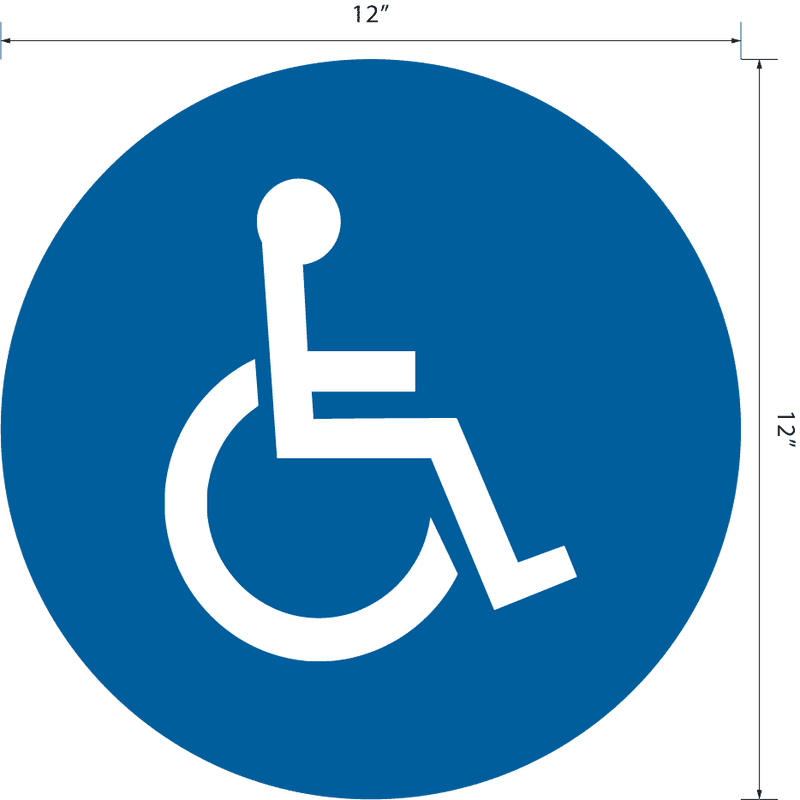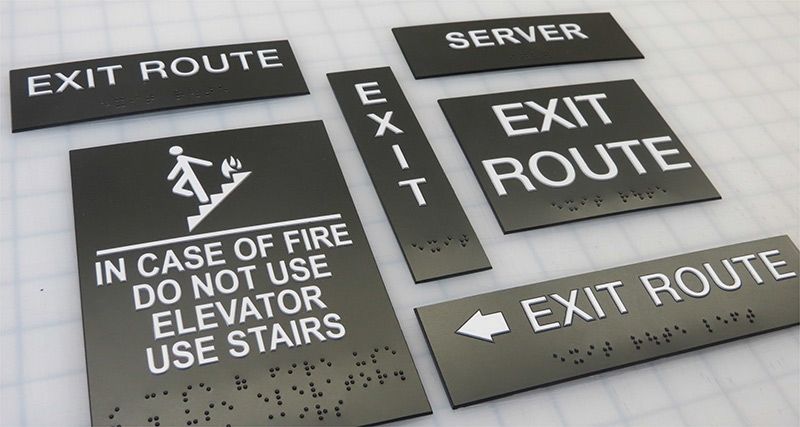The Duty of ADA Signs in Following Accessibility Criteria
The Duty of ADA Signs in Following Accessibility Criteria
Blog Article
Checking Out the Key Attributes of ADA Indications for Boosted Accessibility
In the realm of ease of access, ADA signs offer as silent yet effective allies, making sure that rooms are comprehensive and accessible for individuals with impairments. By integrating Braille and tactile components, these signs break obstacles for the aesthetically damaged, while high-contrast color plans and readable typefaces cater to varied visual needs.
Relevance of ADA Conformity
Ensuring conformity with the Americans with Disabilities Act (ADA) is essential for fostering inclusivity and equivalent gain access to in public areas and workplaces. The ADA, passed in 1990, mandates that all public facilities, companies, and transport solutions suit individuals with impairments, ensuring they take pleasure in the exact same legal rights and possibilities as others. Compliance with ADA standards not only satisfies lawful responsibilities yet also improves an organization's credibility by showing its dedication to variety and inclusivity.
One of the vital elements of ADA conformity is the execution of obtainable signs. ADA indicators are developed to guarantee that individuals with disabilities can easily navigate via areas and structures.
Furthermore, adhering to ADA policies can mitigate the threat of potential penalties and lawful consequences. Organizations that stop working to adhere to ADA standards might deal with suits or charges, which can be both destructive and economically troublesome to their public photo. Hence, ADA conformity is essential to cultivating an equitable atmosphere for everyone.
Braille and Tactile Components
The unification of Braille and responsive components into ADA signage symbolizes the concepts of ease of access and inclusivity. It is normally placed beneath the corresponding message on signs to ensure that people can access the information without aesthetic aid.
Tactile aspects prolong past Braille and include elevated symbols and characters. These elements are created to be discernible by touch, permitting people to determine area numbers, washrooms, exits, and various other crucial locations. The ADA sets details standards relating to the size, spacing, and positioning of these tactile aspects to maximize readability and ensure uniformity across different environments.

High-Contrast Color Pattern
High-contrast color design play an essential duty in enhancing the exposure and readability of ADA signage for individuals with visual impairments. These schemes are necessary as they take full advantage of the difference in light reflectance in between message and history, ensuring that indicators visit are quickly discernible, even from a range. The Americans with Disabilities Act (ADA) mandates the use of particular shade contrasts to fit those with minimal vision, making it a crucial element of conformity.
The efficacy of high-contrast shades depends on their ability to attract attention in numerous illumination conditions, including dimly lit settings and areas with glare. Normally, dark text on a light background or light text on a dark history is employed to accomplish optimum contrast. Black text on a yellow or white background gives a stark aesthetic distinction that assists in fast acknowledgment and comprehension.

Legible Fonts and Text Size
When taking into consideration the layout of ADA signs, the selection of readable fonts and suitable text size can not be overemphasized. The Americans with Disabilities Act (ADA) mandates that typefaces should be sans-serif and not italic, oblique, manuscript, extremely ornamental, or of unusual form.
According to ADA guidelines, the minimal text elevation must be 5/8 inch, and it ought to increase proportionally with checking out distance. Uniformity in text size adds to a cohesive aesthetic experience, aiding people in navigating atmospheres efficiently.
Furthermore, spacing in between lines and letters is essential to clarity. Appropriate spacing stops characters from showing up crowded, improving readability. By sticking to these standards, developers can considerably improve accessibility, making sure that signs offers its intended function for all people, no matter their aesthetic capabilities.
Efficient Positioning Approaches
Strategic positioning of ADA signage is essential for maximizing access and making certain compliance with legal standards. ADA standards specify that indicators need to be placed at an elevation between 48 to 60 inches from the ground to ensure they are within the line of sight for both standing and seated individuals.
Additionally, signs need to be put adjacent to the lock side of doors to enable easy recognition before learn this here now access. Consistency in sign positioning throughout a facility boosts predictability, minimizing confusion and enhancing overall individual experience.

Conclusion
ADA signs play an important role in promoting ease of access by integrating features that deal with the demands of individuals with disabilities. These elements jointly cultivate check these guys out a comprehensive atmosphere, emphasizing the importance of ADA compliance in guaranteeing equal access for all.
In the world of accessibility, ADA signs serve as quiet yet effective allies, guaranteeing that spaces are inclusive and navigable for people with handicaps. The ADA, passed in 1990, mandates that all public facilities, companies, and transportation solutions fit individuals with specials needs, guaranteeing they take pleasure in the very same civil liberties and chances as others. ADA Signs. ADA indications are designed to make certain that people with handicaps can quickly navigate via rooms and structures. ADA standards state that signs need to be installed at an elevation between 48 to 60 inches from the ground to guarantee they are within the line of sight for both standing and seated people.ADA indications play a vital duty in promoting access by integrating features that resolve the requirements of people with disabilities
Report this page